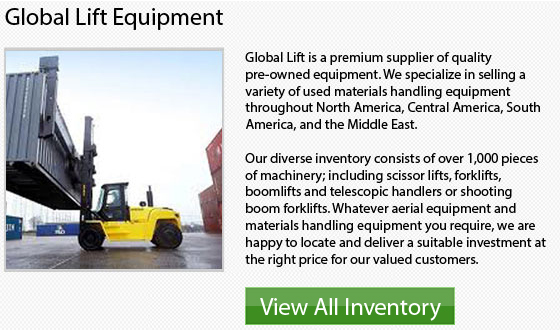
Forklifts have undergone a major change ever since their launch to the market in the 1920s. These machines are now a lot stronger and smarter. These types of machines have revolutionized the material handling world and have become exceptional workhorses within our warehouse and distribution centres all over the globe.
The initial lift trucks roughly 100 years ago, began as really simple pieces of motorized machinery that were just capable of moving pallet loads from one place to another. Today, really sophisticated units are available in the marketplace. These models are available in a wide range of weight capacities, many lifting heights and various designs. In addition, these types of machines are available with various ergonomic designs to improve operator comfort and a lot of new safety features. Keeping the driver as comfy as possible could greatly increase the overall production accomplished during a shift.
A key feature placed on most of the available lift trucks on the market are forks and tires. Tires enable the machine to move around and the forks can carry and lift loads. The basic design and application of different kinds of lift trucks utilized in manufacturing facilities, distribution facilities and warehousing operations is covered in this article.
Counterbalanced Lift Trucks
Counterbalanced Lift Trucks include: Electric forklift units and IC or Internal Combustion models.
Narrow-Aisle Lift Trucks
Narrow Aisle Lift Trucks comprise: Order-Pickers, Turret Trucks and Reach Trucks.
Low Lift Pallet Jacks or Pallet Trucks
In this particular category, Electric-Powered Pallet Trucks are included, as are Non-Powered Pallet Trucks.
Counterbalanced Forklift Trucks
The most common kind of forklift is the counterbalanced sit-down kind of the lift truck. A weight found in the back of this equipment is responsible for counterbalancing the weight of the load. The counterbalance is what prevents the forklift the truck from tipping over.
Counterbalanced lift trucks will normally have lifting heights of approximately 16 feet, or 189 inches. What's more, these models are capable of lifting a range between 4,000 to 6,500 pounds. Counterbalanced forklifts come outfitted with backup alarms and other safety features like lights.
About 60% percent are electric units and approximately 40% percent are IC models. Each type of forklift has a particular place and is best to accomplish a lot of various jobs. Depending on whether or not you would be utilizing the equipment outside or indoors and what particular kinds of loads you would be using as well as what kind of terrain and surfaces you would be operating on determines the type of lift truck that you would pick.